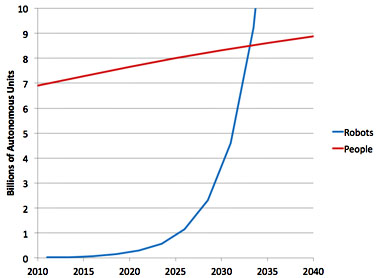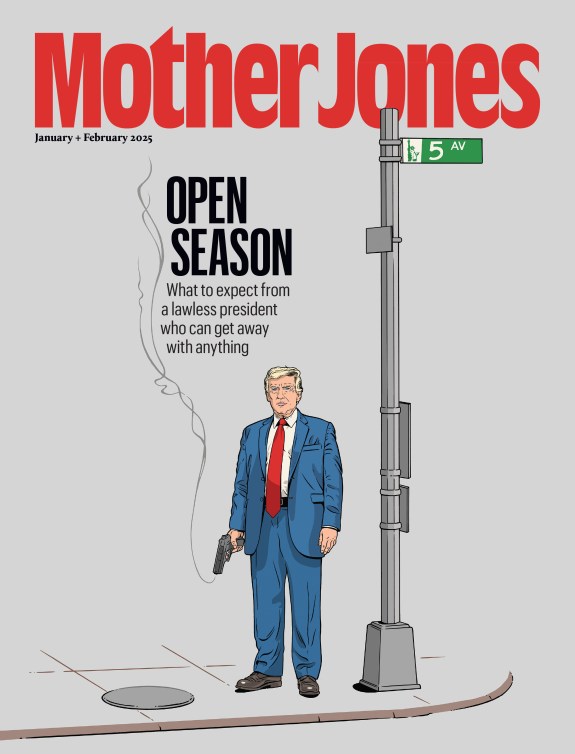The chart on the right is based on data that may or may not be accurate and an extrapolation that’s unreliable. So the precise shape of the curve is mostly guesswork. But generally speaking, it’s  probably about right, and it shows that the global population of robots is set to skyrocket over the next few decades. Sometime in the 2030s there will be more robots than people. Stuart Staniford draws some bleak conclusions:
probably about right, and it shows that the global population of robots is set to skyrocket over the next few decades. Sometime in the 2030s there will be more robots than people. Stuart Staniford draws some bleak conclusions:
- This trend will continue because it’s in the short-term interests of societal elites. The median influencer’s life can be made better with more robotically produced consumer goods and with service robots to perform tedious chores (or human labor made cheap by competition from robots).
- The creative classes can have fun with new toys and with thinking up new uses for the technology.
- Ever larger numbers of people will continue to be made technologically unemployed by this trend.
Six more bullet points follow, ending with:
- However, by that point, there may very well be no easy way back, and all hell will break loose.
Read the whole thing. I pretty much agree that Stuart’s gloomy view is the most likely one in the medium term, and it’s unfortunate that, for a variety of reasons, we’re unlikely in the extreme to ever try to seriously plan for it. Those reasons include the fact that it will happen slowly; lots of people just don’t believe Stuart’s scenario in the first place; lots more don’t want to believe it for self-interested reasons; and addressing it in a serious way would require our cognitive and financial elites to give up a lot of power and wealth, which they won’t do willingly. So this will all probably unfold pretty grimly for a lot of people.

















